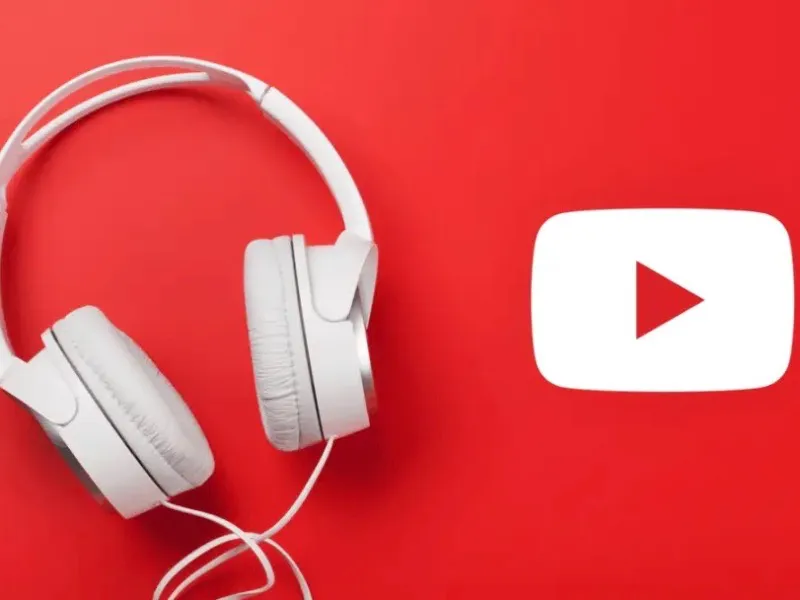- YouTube Music is enhancing its platform by introducing two innovative features designed to improve song discovery.
- These new features mark significant advancements in YouTube Music’s efforts to enhance user experience and stay competitive in the music streaming market.
OUR TAKE
The new AI radio and song recognition features on YouTube Music are quite intriguing. Remember when Spotify’s Discover Weekly feature amazed us with its ability to curate playlists tailored to our tastes. Now, YouTube is joining the game with its AI-powered conversational radio, feeling like having a personal DJ on standby, ready to play whatever genre of music you ask for. However, this feature is currently exclusive to select Premium subscribers, leaving the rest of us eagerly awaiting its wider release. And speaking of the song recognition feature, it’s a blessing for those who love to hum or whistle along to tunes they don’t know the name of. No more frustration over unidentified songs – now, all you need to do is tap the search bar, spot the waveform icon, and sing, hum, or play a snippet of the tune. While Shazam is undeniably the most renowned tool for this purpose, YouTube Music’s offering is just as convenient, given its vast music library. Nevertheless, let’s hope these features are more than just gimmicks and truly enhance the user experience.
–Miurio huang, BTW reporter
What happened
YouTube Music is enhancing its platform by introducing two innovative features designed to improve song discovery. On July 15th, YouTube announced the testing of an AI-generated conversational radio feature and the rollout of a Shazam-like song recognition tool. The AI-generated radio is currently available to select Premium users in the United States, allowing them to create custom radio stations through descriptive prompts. For example, users can request playlists featuring “catchy pop choruses” or “upbeat pop anthems.”
This new feature follows a trend observed in other music streaming services like Spotify, Amazon Music, and Deezer, all of which have been experimenting with AI playlist generation tools. Users who have access to this feature will notice a new “Ask for music any way you like” card in the app’s home feed. Clicking on this card opens a conversational interface where users can either type in custom prompts or choose from suggested ones. Although currently limited to a select group, YouTube plans to expand access to more users in the future.
Simultaneously, YouTube Music has officially launched a song recognition feature that allows users to identify songs by singing, humming, or playing parts of them. This feature, initially available to select Android users earlier this year, is now accessible to all users on both iOS and Android. When users tap the “search” button in the app, they will see a waveform icon indicating the new functionality.
Also read: YouTube’s new frontier: Battling AI mimicry for privacy’s sake
Also read: YouTube permits requests for removing AI-generated content
Why it’s important
These new features mark significant advancements in YouTube Music’s efforts to enhance user experience and stay competitive in the music streaming market. The AI-generated radio feature leverages artificial intelligence to create a more personalised and interactive listening experience. By allowing users to describe the type of music they want to hear, YouTube Music is not only making song discovery more intuitive but also more aligned with individual preferences. This could potentially increase user engagement and satisfaction, fostering greater loyalty to the platform.
The song recognition tool represents a substantial upgrade over existing solutions like Shazam. While Shazam is renowned for identifying songs being played, YouTube Music’s tool extends this capability to identifying songs based on singing or humming, providing a more versatile and user-friendly experience. This enhancement could attract users who often find themselves trying to recall tunes without the actual audio, setting YouTube Music apart from its competitors.
Furthermore, these features reflect a broader trend in the music streaming industry towards integrating AI and machine learning to offer more customised and dynamic services. As competitors like Spotify, Amazon Music, and Deezer also explore AI-driven functionalities, YouTube Music’s early adoption of these technologies positions it well to capture a larger share of the market.
The introduction of these features also underscores YouTube Music’s commitment to innovation and continuous improvement. By investing in advanced technologies and user-centric features, YouTube Music is not only enhancing its current offerings but also paving the way for future developments. This proactive approach could drive growth, attract new users, and maintain the platform’s relevance in a rapidly evolving digital landscape.
YouTube Music’s AI-generated radio and advanced song recognition tool signify important strides in the platform’s quest to provide a superior music streaming experience. These innovations not only improve user interaction and satisfaction but also reinforce YouTube Music’s competitive edge in the industry. As these features become more widely available, they are likely to redefine how users discover and enjoy music on the platform.

